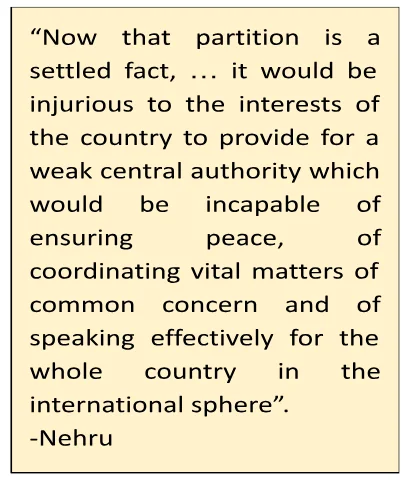![]() 26 Jun 2024
26 Jun 2024
Debate Over Centralization: It was one of the most vigorously debated in the Constituent Assembly.

The argument for greater power to the provinces provoked a strong reaction in the Assembly.
| What should the qualities of a national language be? |
|---|
| A few months before his death Mahatma Gandhi reiterated his views on the language question:
This Hindustani should be neither Sanskritised Hindi nor Persianised Urdu but a happy combination of both. It should also freely admit words wherever necessary from the different regional languages and also assimilate words from foreign languages, provided that they can mix well and easily with our national language. Thus our national language must develop into a rich and powerful instrument capable of expressing the whole gamut of human thought and feelings. To confine oneself to Hindi or Urdu would be a crime against intelligence and the spirit of patriotism. HARIJANSEVAK, 12 OCTOBER 1947 |

| Must Read | |
| Current Affairs | Editorial Analysis |
| Upsc Notes | Upsc Blogs |
| NCERT Notes | Free Main Answer Writing |
The Constitutional debates on state powers and language underscored the need for a strong Centre to ensure national unity and effective governance. Balancing central authority with state autonomy, addressing language diversity, and ensuring universal adult franchise and secularism were pivotal in shaping India’s democratic framework.
| Related Articles | |
| Functions and Legacy of the Indian Constituent Assembly | ECONOMIC DEVELOPMENT |
| Minerals in India | SECULARISM |
<div class="new-fform">
</div>